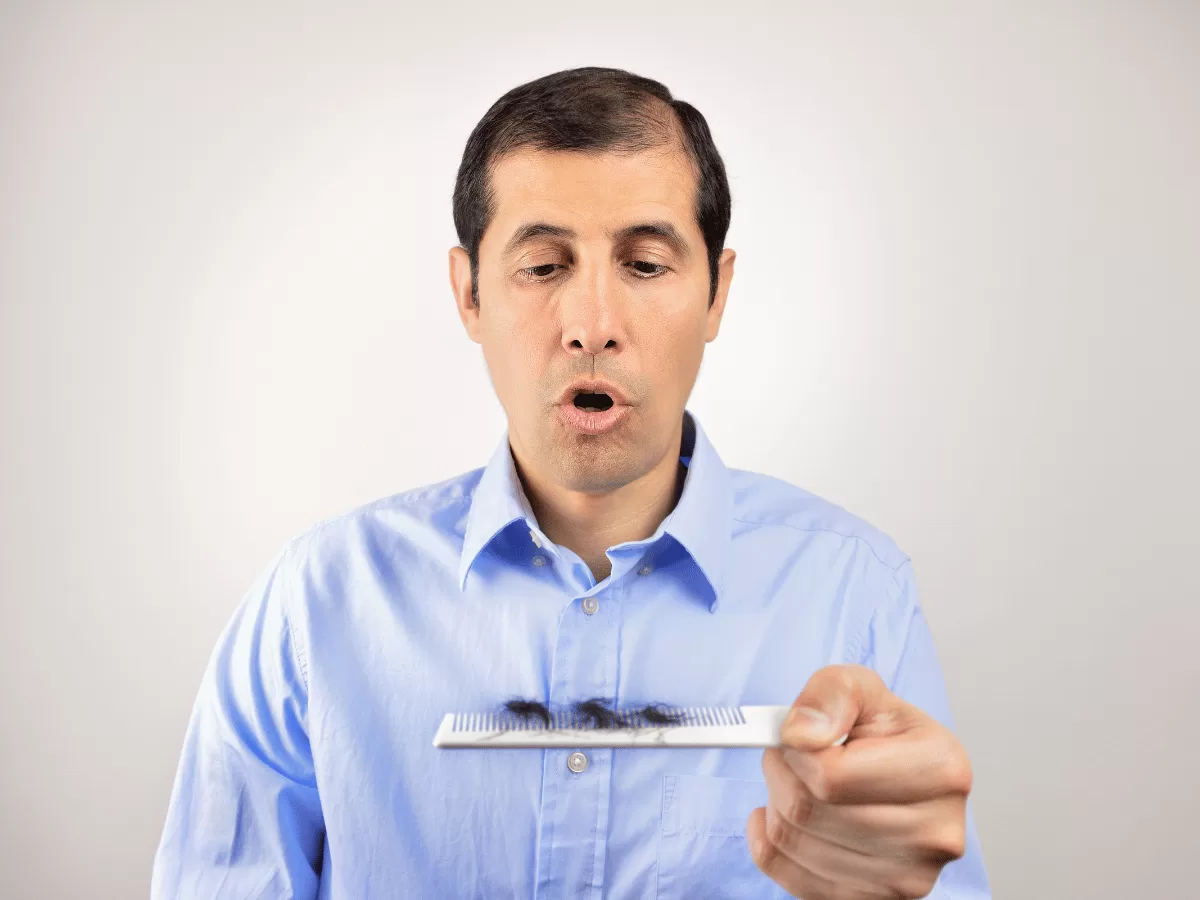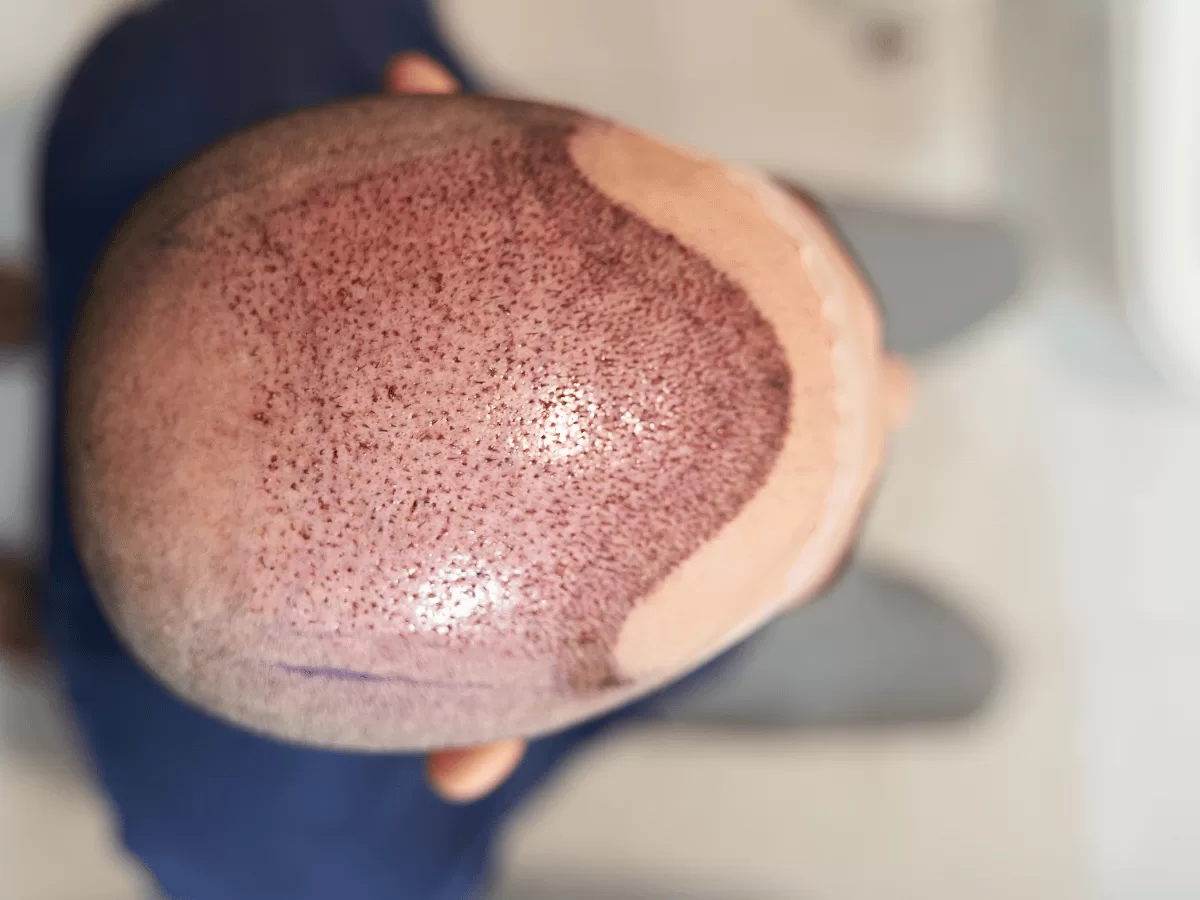
Top Reasons for Hair Loss and How Modern Restoration Can Help
Finding more hair than usual on your brush, in the shower drain, or on your pillow can be an incredibly distressing experience. For both men and women, our hair is deeply intertwined with our identity and self-confidence. When it begins to thin, it can feel like a loss of control and a visible sign of aging or health issues, sparking a wave of anxiety and a desperate search for answers.
The first thing to understand is that you are not alone. Hair loss is an exceptionally common condition, and it is not a single disease but a symptom that can stem from a wide variety of root causes. While a certain amount of daily shedding is normal (typically 50-100 hairs per day), progressive thinning or excessive shedding warrants a closer look.
The good news is that the field of trichology (the science of hair and scalp) has advanced dramatically. We now understand the primary culprits behind hair loss better than ever before, and more importantly, we have a powerful arsenal of effective treatments to combat them.
This comprehensive guide will explore the top reasons for hair loss in adults and illuminate the modern, effective restoration solutions available at a premier clinic in Beverly Hills. Our goal is to replace your worry with knowledge and show you that a path to healthier, fuller hair is very much within reach.
Part 1: Uncovering the Root Cause – The Top Reasons for Hair Loss
The first and most critical step in any successful hair restoration journey is an accurate diagnosis. The right treatment can only be prescribed once the underlying cause of the hair loss is identified. Here are the most common reasons we see in our clinic.
1. Androgenetic Alopecia (Genetic Hair Loss)
This is, by far, the most common cause of hair loss in both men and women, accounting for up to 95% of cases. It is not a disease but a genetic predisposition.
- For Men (Male Pattern Baldness): You’ve seen the classic patterns: a receding hairline that forms an “M” shape, followed by thinning and balding on the crown (the vertex). This is caused by a genetic sensitivity to a hormone byproduct called Dihydrotestosterone (DHT). DHT binds to hair follicles in susceptible areas, causing them to gradually shrink or “miniaturize” with each hair cycle. Over time, the follicles become so small that they can no longer produce a visible hair, leading to baldness.
- For Women (Female Pattern Hair Loss): In women, the pattern is typically different. It usually presents as a diffuse thinning over the entire top of the scalp, most noticeable as a widening of the central part line. The frontal hairline is often preserved. While the exact hormonal mechanism is complex, a genetic predisposition is still the primary driver.
2. Telogen Effluvium (Stress- and Shock-Related Shedding)
This is the second most common cause of hair loss and is often the most alarming because the shedding can be sudden and dramatic. Telogen Effluvium is a reactive hair loss triggered by a significant physical or emotional shock to your system.
- The “Why”: A major stressful event can signal a large number of your hair follicles to prematurely shift from the active growing (Anagen) phase to the resting/shedding (Telogen) phase.
- The 3-Month Delay: Because the Telogen phase lasts about 3 months, the massive shedding event doesn’t occur immediately after the shock. It happens about three months later, which often makes it difficult for people to connect the hair loss to the initial trigger.
- Common Triggers:
- Physical Stress: Major surgery, high fever (like from COVID-19 or Dengue), childbirth, or rapid weight loss.
- Emotional Stress: A period of intense grief, anxiety, or professional pressure.
- Nutritional Deficiencies: Crash dieting or a lack of key nutrients like iron or protein.
The good news is that Telogen Effluvium is almost always temporary. Once the underlying stressor is removed, the follicles will reset, and the hair will typically regrow over the next 6-12 months.
3. Alopecia Areata (An Autoimmune Condition)
This is a less common but significant cause of hair loss. Alopecia Areata is an autoimmune disease, meaning the body’s own immune system mistakenly attacks the hair follicles, causing hair to fall out.
- The Pattern: It classically presents as one or more perfectly smooth, round, coin-sized bald patches on the scalp or elsewhere on the body. The course of the disease is unpredictable; the hair may regrow on its own, or the patches may expand.
- The Treatment: This condition requires a diagnosis from a dermatologist or trichologist, who can prescribe treatments like corticosteroid injections or topical creams to manage the immune response.
4. Traction Alopecia (Mechanical Hair Loss)
This type of hair loss is not caused by hormones or internal health but by external, physical stress on the hair follicles. It is caused by hairstyles that exert a constant, prolonged pulling force on the hair.
- Common Causes: This is particularly relevant in India and includes tightly pulled ponytails, buns, tight braids, and the consistent wearing of tight turbans or headwear.
- The Pattern: The hair loss is typically concentrated along the hairline and temples, where the pulling force is greatest. In the early stages, it is reversible if the hairstyle is changed. However, if the traction continues for years, it can cause permanent scarring of the follicles, and the hair loss becomes irreversible.
5. Other Common Factors
- Nutritional Deficiencies: A lack of essential nutrients like iron, zinc, vitamin D, and protein can be a primary trigger for hair thinning.
- Thyroid Disorders: Both an overactive (hyperthyroidism) and underactive (hypothyroidism) thyroid can disrupt the hair growth cycle and cause diffuse hair loss.
- Medications: Certain medications, including some blood thinners, antidepressants, and chemotherapy drugs, can have hair loss as a side effect.
Part 2: The Path to Regrowth – How Modern Hair Restoration Can Help
Once a proper diagnosis has been made, you can move forward with a targeted and effective treatment plan. Modern hair restoration is not a one-size-fits-all approach; it’s a spectrum of solutions tailored to the specific cause of your hair loss.
1. Medical Treatments (The First Line of Defense)
For many types of hair loss, particularly genetic thinning, these FDA-approved medications are the foundation of treatment.
- Minoxidil: A topical solution or foam applied directly to the scalp. It works as a vasodilator, increasing blood flow to the follicles, and is believed to prolong the Anagen (growth) phase. It is effective for both men and women.
- Finasteride/Dutasteride: Oral medications for men that work by blocking the enzyme that converts testosterone to DHT. By reducing DHT levels, they can effectively stop the miniaturization of hair follicles and, in many cases, lead to regrowth.
2. Regenerative Therapies (Boosting Your Body’s Natural Growth)
These minimally invasive treatments are designed to stimulate and nourish existing hair follicles, making them ideal for treating diffuse thinning and supporting the results of other therapies.
- Platelet-Rich Plasma (PRP) Therapy: This is a leading regenerative treatment. It involves drawing a small amount of your own blood, spinning it in a centrifuge to isolate the platelets (which are rich in powerful growth factors), and injecting this concentrated plasma into the scalp. These growth factors stimulate dormant or weakened follicles, improve blood supply, and promote thicker, healthier hair growth.
- Mesotherapy: This involves injecting a customized cocktail of vitamins, minerals, amino acids, and other nutrients directly into the scalp to nourish the hair follicles and improve hair health.
3. Low-Level Laser Therapy (LLLT)
This is a non-invasive, pain-free treatment that uses red light energy, typically delivered via a cap or helmet worn at home. The light energy is thought to stimulate cellular activity within the follicles, improving their function and encouraging hair growth.
4. The Gold Standard for Permanent Results: Hair Transplantation
For hair loss that is permanent—primarily advanced Androgenetic Alopecia or scarred areas from Traction Alopecia—a hair transplant is the only solution that can restore hair to a completely bald area.
- The Principle: The procedure is based on the concept of “donor dominance.” The hair follicles at the back and sides of the head are genetically resistant to the DHT that causes balding.
- The FUE Technique: The modern gold standard is FUE (Follicular Unit Excision). A surgeon meticulously extracts individual follicular units (natural groupings of 1-4 hairs) from the permanent donor area and then artistically transplants them into the thinning or balding areas.
- The Permanent Result: Because the transplanted follicles retain their genetic resistance to DHT, they will continue to grow for a lifetime in their new location. A well-performed hair transplant by an expert surgeon provides a completely natural and permanent result.
The Importance of a Professional Diagnosis at a Top BEVERLY HILLS Clinic
As you can see, the causes of hair loss are varied, and so are the treatments. Using a treatment for genetic hair loss will not work for a nutritional deficiency, and vice versa. This is why self-diagnosing from the internet is a recipe for wasted time, money, and emotional distress.
The first and most critical step is a comprehensive consultation with a hair loss expert. A specialist at a premier hair restoration clinic in Beverly Hills will perform a thorough evaluation, which includes:
- A detailed discussion of your medical history, family history, and lifestyle.
- A physical examination of your scalp, often using a high-magnification device called a trichoscope to analyze your hair follicles and scalp condition.
- Blood tests, if necessary, to rule out underlying issues like anemia or thyroid disorders.
Only after this accurate diagnosis can a personalized and effective treatment plan be created for you.
Conclusion: A Message of Hope and Action
Losing your hair can feel like a lonely and overwhelming battle, but it’s one you do not have to fight alone or without hope. The science of hair restoration has provided us with a deep understanding of why hair loss occurs and a powerful and diverse set of tools to combat it.
Whether your solution lies in a medical treatment to halt genetic thinning, a regenerative therapy like PRP to boost your natural growth, or a permanent surgical restoration with a hair transplant, the path to regaining your hair—and your confidence—is clearer and more effective than ever before.
Your journey begins with a single, decisive step: seeking an expert diagnosis.



